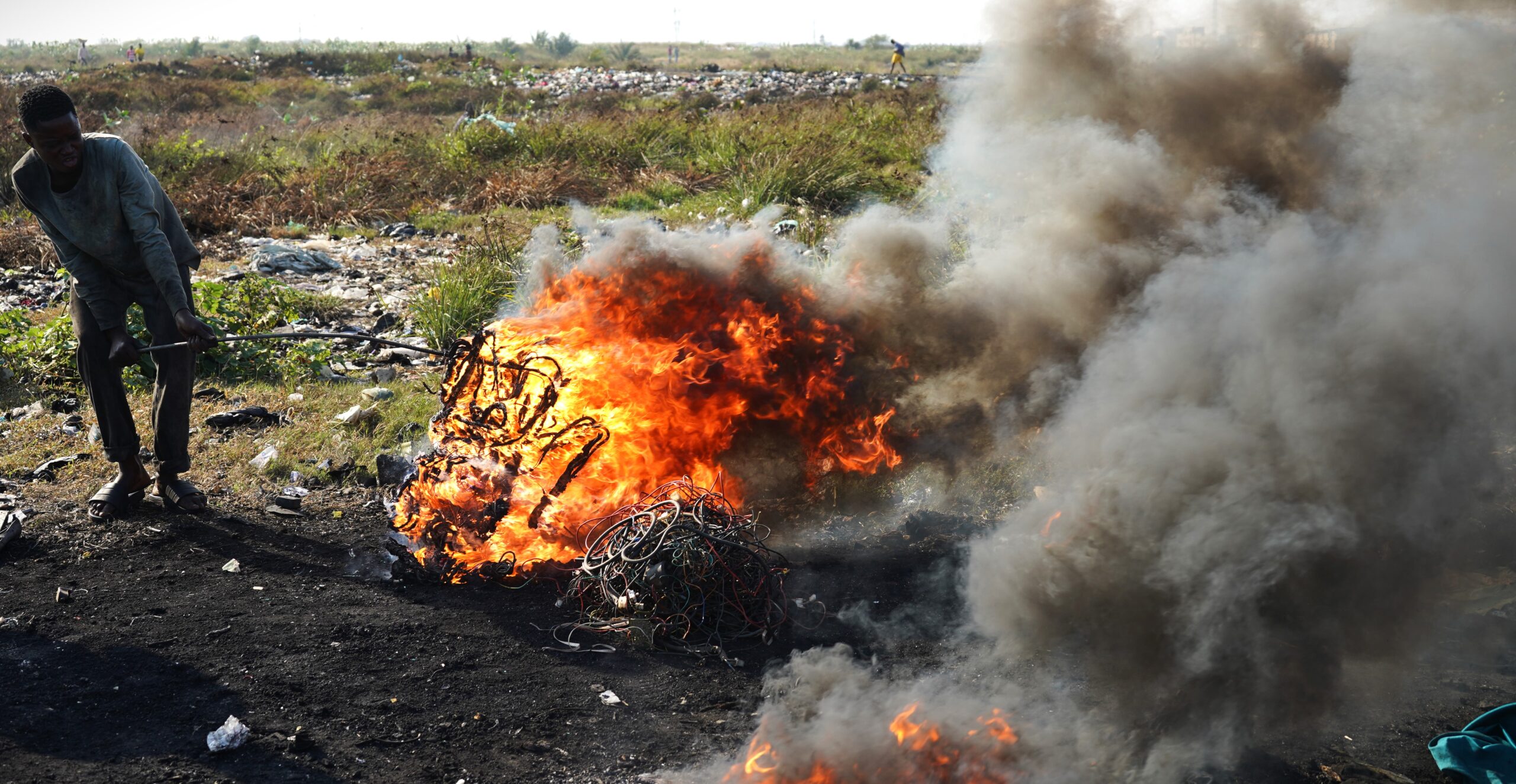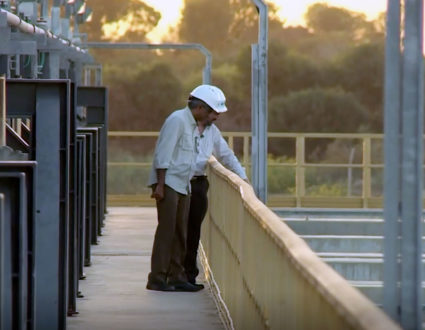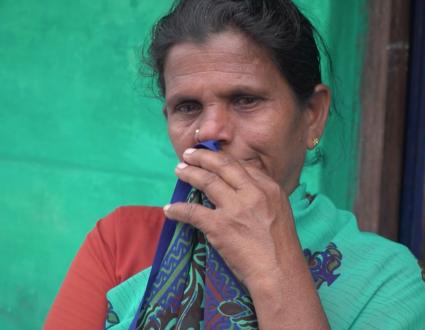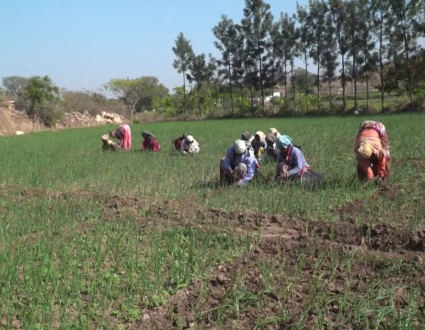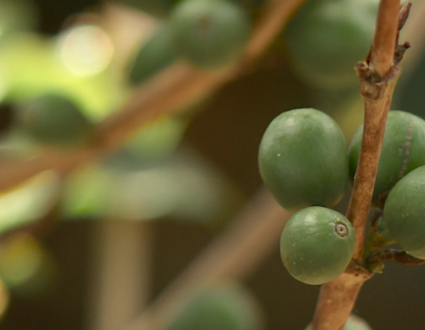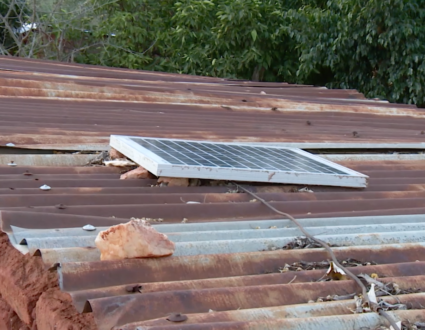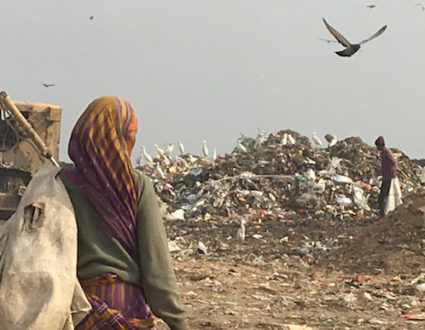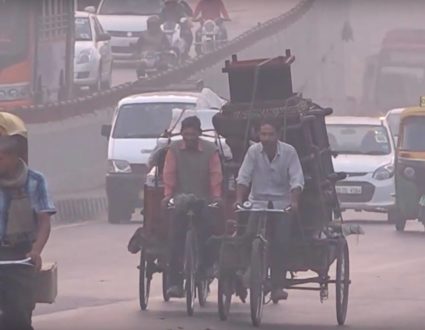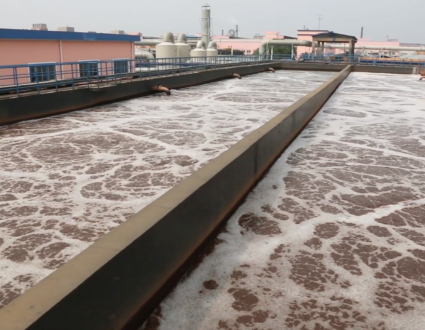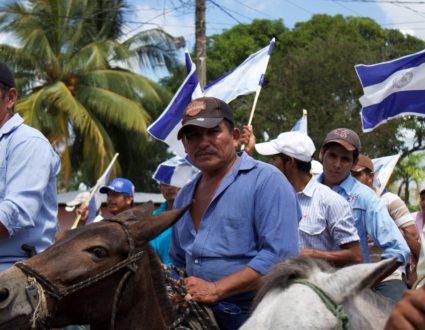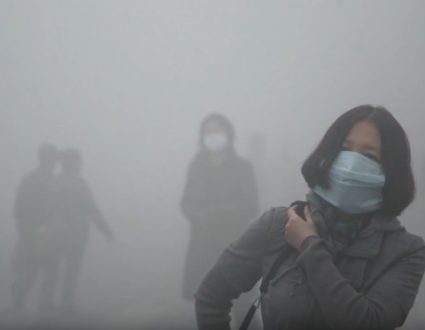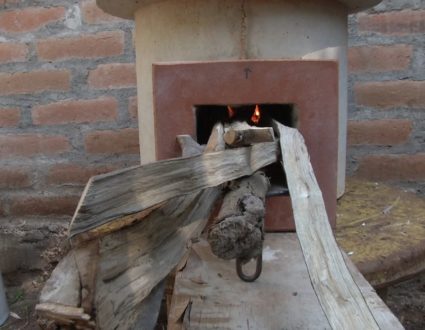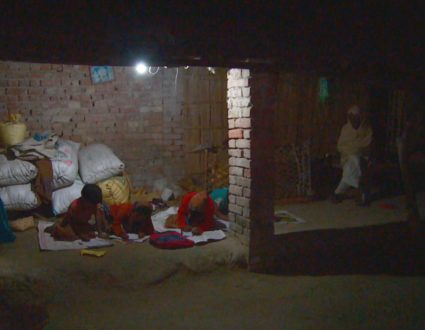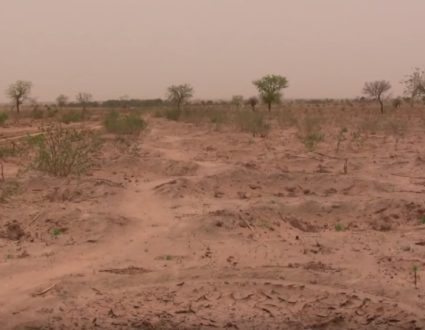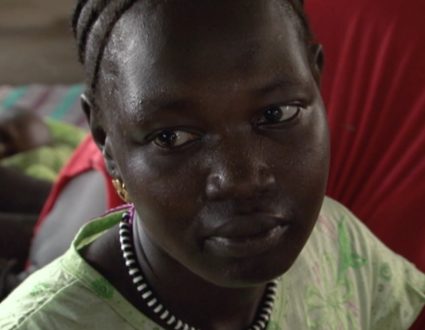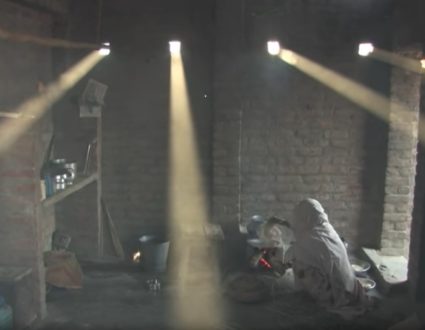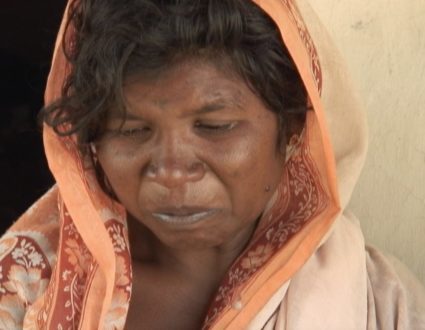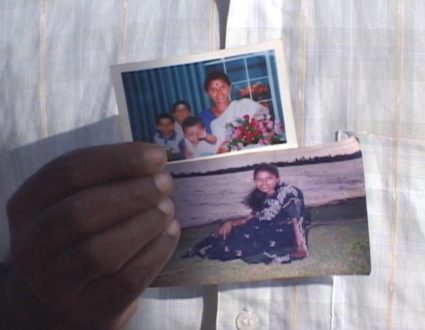Judy Woodruff:
Now, how climate change might affect your breakfast habit.
In his next installment in a series of reports from El Salvador, Fred de Sam Lazaro examines how coffee growers are caught in the middle of an industry affected by warming temperatures around the globe, forcing some to head for the cities, or even to North America.
Fred de Sam Lazaro:
If you want to see what’s driven tens of thousands of Salvadorans to leave this region, many for the U.S., come to this country’s coffee growing highlands.
The arabica beans from here were once a source of pride, and 50 percent of the country’s exports. But El Salvador’s coffee crop was almost completely wiped out five years ago by a disease called leaf rust. Across Central America, some 1.7 million jobs were lost, and growers who survived must contend now with another threat that looms large, warming temperatures over the past four decades.
A scramble is on to save this staple from what experts say is an existential threat.
Benoit Bertrand:
This hybrid is very weakened by climate conditions.
Fred de Sam Lazaro:
Benoit Bertrand leads a team of researchers at the industry-funded World Coffee Research, which is grafting new hybrid seedlings, trying to develop plants that can adapt to a changing climate.
So you are racing against time?
Benoit Bertrand:
We are racing against time, yes.
Fred de Sam Lazaro:
He was examining some hybrid plants on an experimental farm outside Santa Ana, El Salvador, and didn’t like what he was seeing.
Benoit Bertrand:
You can see there, on this branch, for example, all the nodes are flowering in January.
Fred de Sam Lazaro:
Two months ahead of where they should be?
Benoit Bertrand:
Two months ahead, yes.
Fred de Sam Lazaro:
Early flowering means the plants must endure two more dry season months, lowering the bean quality, even in hybrids like this one, called F1, a sturdier variety first introduced to Central America seven years ago.
Benoit Bertrand:
These are the most vigorous plants that we can create today. So if this affects F1 hybrids, it’s worse when affecting traditional varieties.
Fred de Sam Lazaro:
In this test field, there are 48 different families of coffee plants, each bred with different characteristics.
Benoit Bertrand:
This one, really, the vigor is not satisfactory for these conditions.
Fred de Sam Lazaro:
The leaves are not nearly as green, as verdant. And it just doesn’t look as healthy and skinnier.
Benoit Bertrand:
Yes, exactly.
If the plant is healthy, it can resist. It can tolerate more and more the disease. And when the plant is really weakened by the climate conditions, it cannot resist.
Fred de Sam Lazaro:
That’s what’s made Jorge Garcia’s crop vulnerable to the rust disease. He and other growers blame the steadily rising temperatures in these highlands, hurting a plant that thrives in cooler conditions.
Jorge Garcia:
We never thought it would be as bad as it’s ended up being.
Fred de Sam Lazaro:
How much did you lose?
Jorge Garcia:
Basically, we lost everything.
Fred de Sam Lazaro:
Garcia is a small farmer near Jayaque, about an hour west of San Salvador. The holes throughout his farm mark where coffee trees once stood.
Fifteen miles away, Wilfredo Ramos heads a cooperative of 57 small coffee farmers. He says many of his members had to stop farming in the wake of the epidemic.
Wilfredo Ramos:
In order to survive, many of our wives had to move to the city and work domestic help, and the men had to find non-farm jobs.
Fred de Sam Lazaro:
Many are now in the process of trying to rebuild their farms. We watched as some of his members weighed their most recent harvest. Last year’s crop was down 90 percent from pre-epidemic levels. Ramos thinks this year may bring better news.
Still, he says, it’s been very difficult.
Wilfredo Ramos:
We are having trouble getting credit from the banks. And since credit is limited, we don’t have the money to explore new areas of production.
Fred de Sam Lazaro:
One organization that has been trying to help is Blue Harvest, a nonprofit run by Catholic Relief Services. It teaches farmers new methods to deal with climate change. Kraig Kraft is one of the advisers.
Kraig Kraft:
What they’re facing requires more knowledge and more tools. We’re also promoting techniques that will lower the temperature, increasing the humidity of the soil through cover-cropping, through mulching, increasing the amount of shade that’s on the farm. All of that drives the temperature lower on the farm.
Fred de Sam Lazaro:
Blue Harvest is also encouraging farmers to branch out into new crops, something that farmer Jorge Garcia has decided to do.
Jorge Garcia:
We are now trying to grow cocoa. My expectation is that, in two years, we will be in a better position here at the farm.
Fred de Sam Lazaro:
But cocoa, which requires a great deal of water, isn’t a perfect solution either. Some larger farmers, like Carlos Borgonovo, have decided to completely renovate their fields, planting new coffee trees and adopting new techniques, like aggressively pruning trees to stimulate vigorous growth.
For the last two years, he’s also organized a conference of coffee growers, large and small, to try to develop and share best practices in the face of the growing threat.
Carlos Borgonovo:
So, one of the major challenges we have is to make a coordinated effort as a country — all stakeholders are in this — and push a renovation project with these new varieties and agricultural practices that will allow us to produce more coffee and be sustainable over time.
Fred de Sam Lazaro:
Borgonovo can afford new hybrid plants, and he’s excited by the possibilities of the second-generation hybrids, being grafted here onto sturdier root systems, in an attempt to breed more rigorous, disease-resistant plants.
But that’s not an easy solution for the small farmers, says Blue Harvest’s Kraig Kraft.
Kraig Kraft:
These plants are expensive. It’s 2.5 times what coffee plants cost, and small farmers don’t have access to credit. This represents an investment that takes four to five years to pay off. And so I think that these hybrids have an incredible potential. But I would like to know how we can get these in the hands of small farmers.
Fred de Sam Lazaro:
Restoring El Salvador’s coffee crop, which has now dropped to just 2 percent of the country’s exports, is not only a matter of pride, Borgonovo says. It’s a matter of economic security.
Carlos Borgonovo:
It’s a big creator or jobs. We used to employ close to over 300,000 people a year. Now we’re down to 86,000. It’s a way to prevent migration to cities, and to prevent emigration to the United States and Mexico and Canada.
Fred de Sam Lazaro:
For consumers, coffee will always be available. But at what price? Experts say it’s hard to tell.
And the key threat, they add, is to some of the world’s highest-quality beans, around which a multibillion-dollar industry has evolved over the past two decades.
For the “PBS NewsHour,” I’m Fred de Sam Lazaro outside Santa Ana, El Salvador.
Judy Woodruff:
Fred’s reporting is a partnership with the Under-Told Stories Project at University of St. Thomas in Minnesota.
The Race is On
What has driven tens of thousands of Salvadorans to leave home, many for the U.S.? El Salvador’s coffee beans suffered a devastating disease five years ago, and now face an even greater existential threat: climate change. Special correspondent Fred de Sam Lazaro reports on how researchers there are trying to develop a plant that can adapt to warming global temperatures.
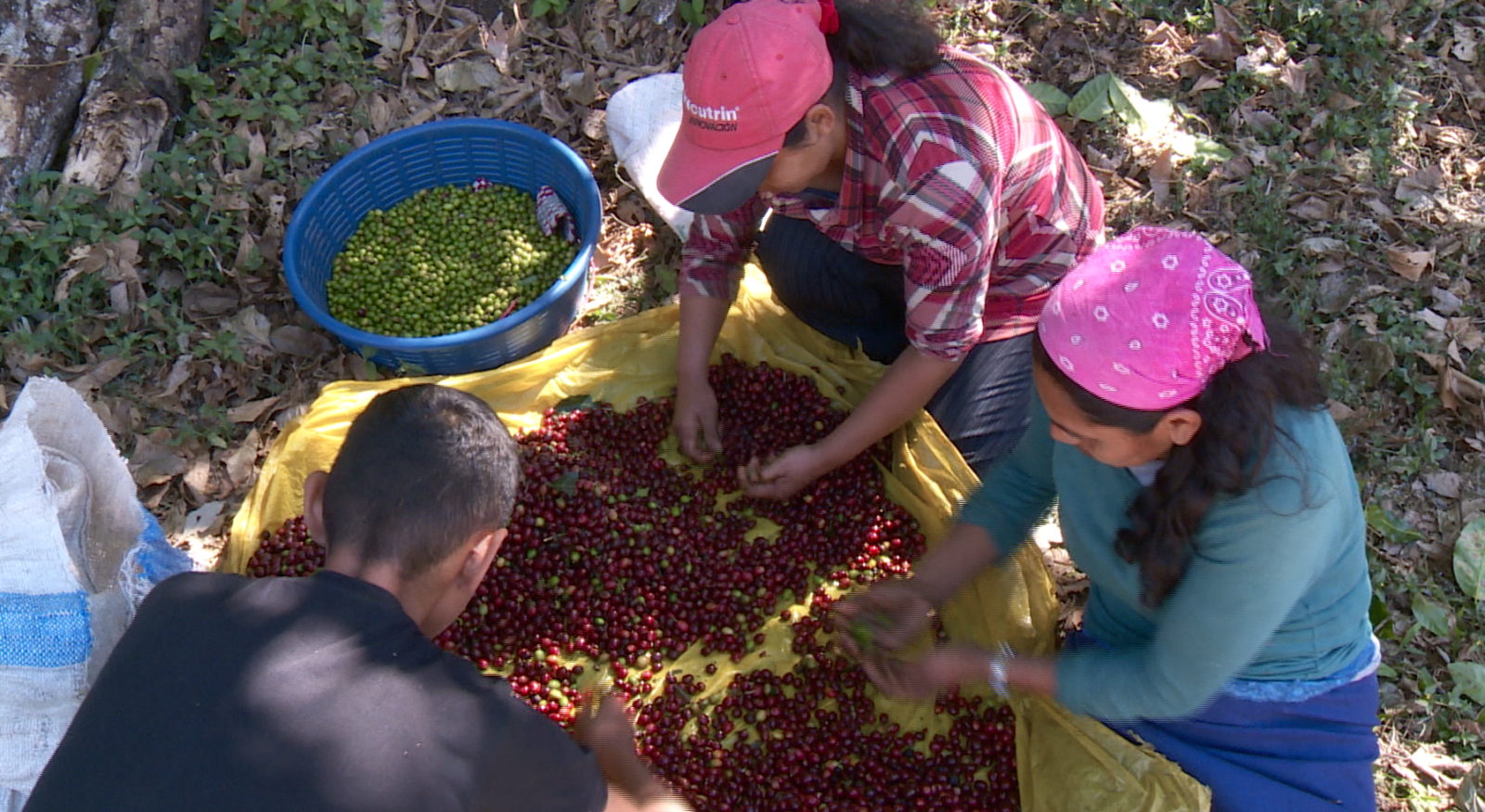
Lost crops, lost jobs
“It’s a big creator of jobs. We used to employ close to over 300,000 people a year. Now we’re down to 86,000. It’s a way to prevent migration to cities, and to prevent emigration to the United States and Mexico and Canada.” -Carlos Borgonova, Large Scale Coffee Farmer

A Hybrid Solution
In an effort to save future coffee crops from warming global temperatures, researchers and scientists at World Coffee Research are grafting new hybrid seedlings that are stronger and able to resist temperature shifts.
Twisting Stems
The hope is that they will cultivate strands strong enough to resist climate change, but many small scale farmers, already struggling from the leaf rust and crop failures, cannot afford the new plants.






